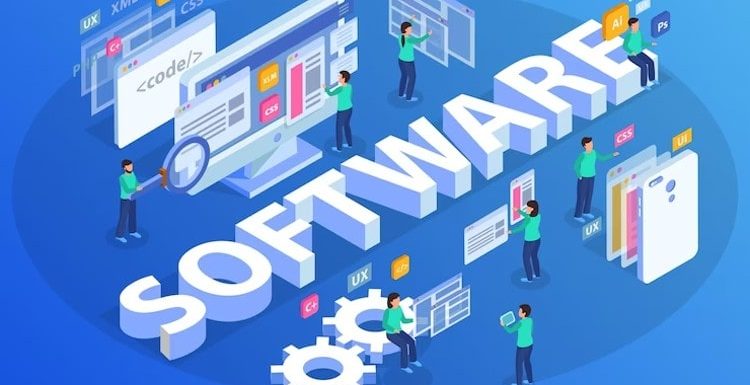
Software development documentation in software engineering is the sunshade term that surrounds all written materials and documents dealing with a software product’s development and use. All project development products, whether developed by a small team or a complex corporation, need some related documentation.
And various types of documents are developed through the whole software development lifecycle (SDLC). Documentation exists to explain the complete product functionality, gather project-related information and allow you to discuss all important questions arising between developers and stakeholders.
What is software development documentation?
Software development documentation or Technical documentation in custom software development is the collection of data that provides detailed information regarding the software system, software components, and how they function. Technical documentation is developed to help stakeholders, developers, and system administrators understand the implementation, architecture, and design of the software system.
Technical documentation is an integral part of software development as it assists to ensure that the software can be updated and maintained efficiently, and that end users can know and use the software effectively.
Software development documentation typically includes the following:
- Architecture documents
- Design documents
- Technical specifications
- User manuals
- Installation guides
- Troubleshooting guides
Types of Software development documentation
Mainly there are two types of project documentation available in the market- product documentation and project documentation. Let’s discuss both in detail.
Product Documentation
Product documentation is a collection of info and documents that provides information about the software, its functions, features, guide, and instructions on how to use the product. This documentation is made for end-users, stakeholders, and customers who need to learn the product’s capacities and how to work with it.
This type of documentation is further divided into two parts- System documentation and User documentation.
System documentation consists of guides on software requirements documents, design decisions, program source code, architecture descriptions, and other helpful guides.
Whereas, User documentation consists of information on various system tutorials, troubleshooting manuals, user guides, installation, and other reference manuals.
Project documentation
Documentation is a collection of different data that assists us with information about any project, its objectives, its scope, timeline, and other deliverables. It serves as the record of the software’s planning, execution, results, etc., and is used to deliver project information to stakeholders like project management, project team members, and its customers.
This type of documentation consists of data related to test schedules, project plans, standards, reports, meeting notes, and even business correspondence.
Best Practices for software development documentation
There are many points to keep in mind while developing software documentation. However, here’s a list of some primary facts to consider.
Here are some best practices for developing and maintaining software development documentation:
- Follow the project development life cycle: The SDLC process is a platform for developing projects, beginning from requirements gathering and ending with maintenance and deployment. Following the SDLC helps ensure that the software development process is systematic, thorough, and consistent.
- Use of version control: Version control systems like Git or SVN helps with the management of changes in the software codebase. Using these systems makes it easy to keep records of the changes, collaborate with team members, and roll back the updates if necessary.
- Write clear and maintainable code: Making clear, clean, and maintainable code is necessary for developing the software development process effectively and efficiently. Using commenting code, coding standards, and sticking to best practices can ensure that the code is maintainable and easy to understand.
- Test often and in early stages: Code testing is an essential phase of the software development procedure. Testing early and quite often helps catch errors, bugs, and other issues prior to them becoming more difficult and expensive to fix.
- Use automated testing: Automated testing tools can help reduce the time and effort required to test software. These tools can automate repetitive tasks such as regression testing and help ensure that the project fulfills the required quality standards.
- Prepare the document thoroughly: Thorough documentation is necessary for maintaining software from time to time. Documenting processes, code, and requirements helps the team members to understand and work with the project even if they didn’t develop it from the beginning.
- Use of continuous integration/continuous delivery tools (CI/CD): CI/CD platform automates the deployment, building, and testing process. Using CI/CD tools can assist streamline the software development procedure, minimize errors, and make it quicker to deploy software changes.
- Foster collaboration and communication: Effective communication and collaboration of stakeholders, members, and users are essential for victorious software development. Encouraging open communication and collaboration can help ensure that everyone involved in the project is working on the same page and working towards the same goals.
By following these best practices, software development teams can develop high-quality software that meets user requirements, is easy to update and maintain, and can be deployed on time and within budget.
Conclusion
In conclusion, software development documentation is a critical process for ensuring the triumph of software development processes. By using suitable documentation types and following best practices like adhering to the SDLC (software development life cycle), writing maintainable and clean code, using automated testing, testing early and often, and supporting communication with collaboration, project development teams can build high-quality software that fulfills user needs, is easy to update and maintain, and can be deployed on time.
By investing time and effort in creating and maintaining software development documentation, teams can minimize errors, improve productivity, and ultimately deliver software that meets or exceeds user expectations. Hence picking suitable documentation and implementing best practices can make the software development process easy.
Author Bio:
Firoz Irani is a highly skilled technical business analyst with years of experience at TatvaSoft. He has a background in design, data analysis, and project management. He strongly believes that knowledge is meant to be shared, for there is a lot we can learn from each other.
